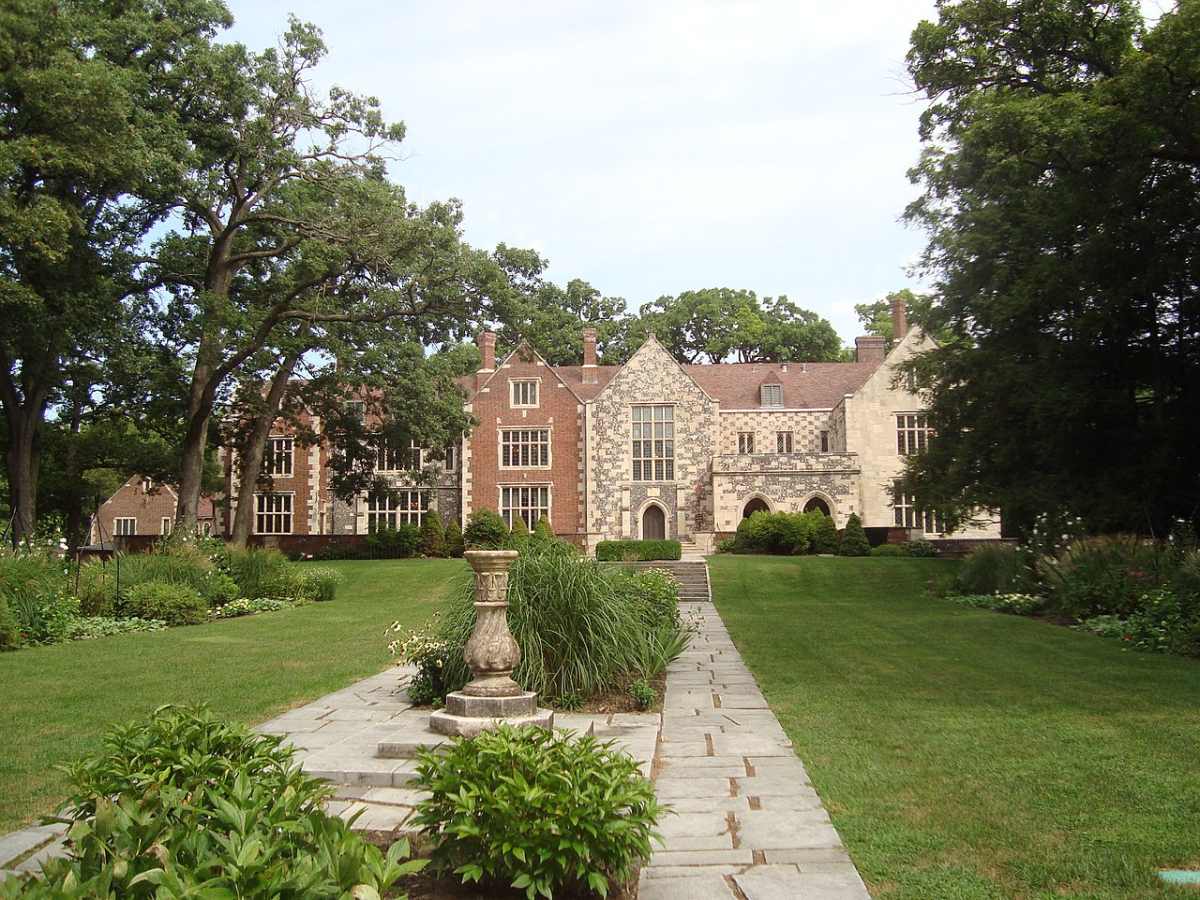
Situated along the “River of the Monks,” Des Moines serves as the capital of a state with deep roots in agriculture. And for many Iowans, warmer days can prove stressful for the cool-season turfgrasses that thrive here.To help you maintain a lush, healthy lawn during these challenging summer months, here are nine summer lawn care tips for Des Moines.
- Mow Wisely
- Keep Blades Sharp
- To Seed, Not to Seed, or Sod?
- Watering: Two Options
- Insecticides vs. White Grubs
- Fertilizing During the Summer
- Hold off on the Herbicides
- Aerate During Fall Instead
- Observe Iowa Water Restrictions
1. Mow Wisely
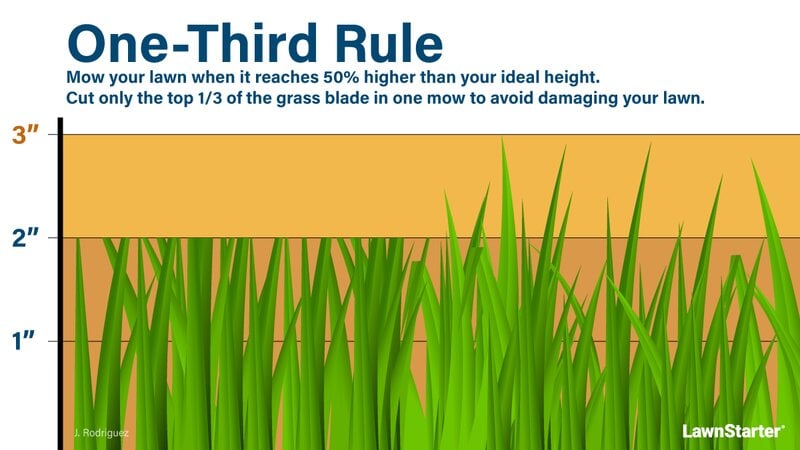
You don’t need to pillage your lawn each time you mow. Instead, cut only a third of the grass blade when you mow the lawn. Grass that is shorter than 3 inches in height is more susceptible to heat damage and drought. It is also more likely to succumb to invasive weeds (which you can read about in our Iowa weed guide).
It’s best if you aim to mow your lawn once or twice a week to improve the color of your grass.
- Don’t cut off more than one third of the grass’ height. Doing so reduces its ability to tolerate additional environmental stresses and increases the likelihood of weed invasion.
- Mow in the morning or the evening to avoid added stress on the turf. It’s ideal to schedule this either from 8-10 a.m. or 4-6 p.m.
- Dormant (brown) lawns shouldn’t be mowed. Traffic could damage the turf.
- Don’t mow wet grass to avoid brown or bare spots due to clumping of clippings.
- Raise the mower blades. More leaf area cools the crowns of turfgrass. Adding at least half an inch to your mowing height during summer is ideal.
How tall should you cut the lawn in summer? Well, it depends on the type of grass. We’ve listed the recommended height for these best grasses to grow in Des Moines, Iowa.
| Grass | Cool or Warm Season | Recommended Summer Mowing Height |
| Kentucky Bluegrass | Cool-Season | 3 – 3.5 inches |
| Fine Leaf Fescue | Cool-Season | 3 – 4.5 inches |
| Perennial Ryegrass | Cool-Season | 2 – 3 inches |
| Tall Fescue | Cool-Season | 3.5 inches |
| Buffalograss | Warm-Season | 2.5 – 3.5 inches |
Note: Adding at least 0.5 inches in your normal mowing height is good for your grass during summer.
2. Keep Blades Sharp
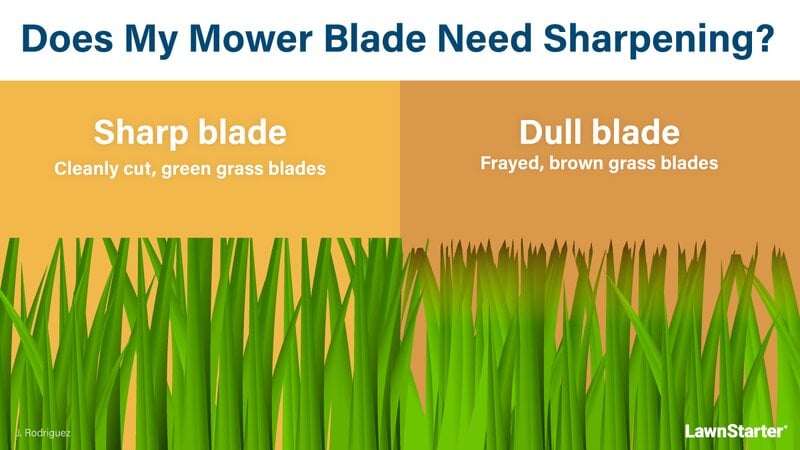
Believe it or not, keeping your lawn mower blade sharp contributes to a healthy lawn. Using dull blades only bruises and tears leaf tips instead of slicing it with a clean cut.
Cutting the lawn with a dull blade may cause your grass to lose moisture faster and turn brown. Weakened and frayed grasses are more prone to insect infestations and lawn diseases, so keep your blades sharp.
3. To Seed, Not to Seed, or Sod?
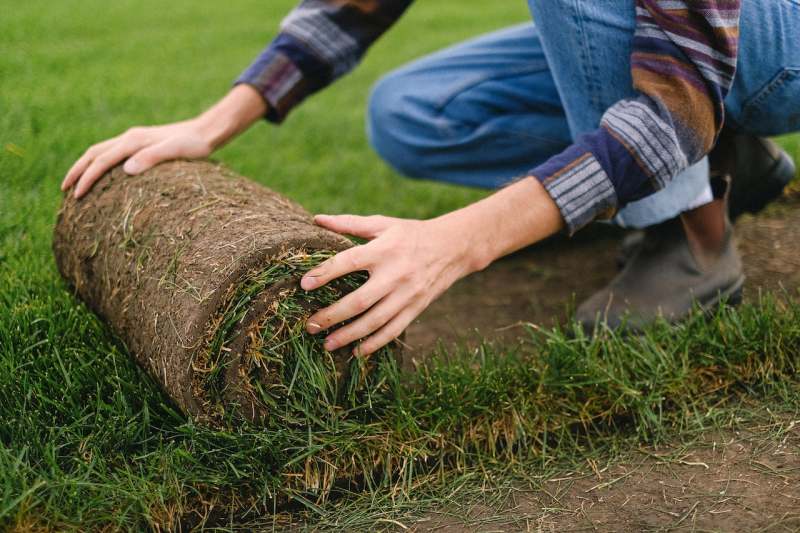
If you want to plant new grass seed or install sod in your lawn, summer’s not the best time to do it. We recommend overseeding cool season grasses, which thrive best in Iowa, during early fall.
Sodding on the other hand, or the process of transplanting squares of rooted turfgrass, is possible. Ideally, you should be doing this during spring or early autumn. However, it will still grow fine anytime from April until November.
Planning to sod in the summer heat? Here are some things you need to do:
- Make sure that the ground is damp enough. Water it before laying sod to cool it down.
- Lay down the sod as quickly as you can. Getting more people to help is ideal.
- For the first two weeks, water the freshly installed sod twice a day. After the first two weeks, water at least once a day for the next several weeks.
- Mow your lawn at the recommended height after 10 days or so.
If you prefer to seed cool-season grasses instead, wait until late summer or early fall (mid-August to early September). Doing so will revive patches of the lawn that died over the summer, giving you a fresh, new lawn come springtime.
Do the following to overseed patchy areas:
- Broadcast the grass seed over the soil, following the manufacturer’s application rate.
- Loosely rake over the area with the back of the rake for good seed to soil contact, and cover it with either a layer of compost or some mulch.
- Water the lawn regularly as it begins to sprout. Keeping the soil moist (not soggy) as it germinates is essential. This means watering from once up to several times per day depending on the weather.
Buffalograss: the Summer Exception
If you’re planning on seeding low-maintenance warm-season grasses like buffalograss in Iowa, you’re in luck. The best time to establish this type of grass in Des Moines is around June 1, just a few days away from the start of summer.
Other than using seed, warm-season grasses are also established vegetatively by sod, plugs, or sprigs. Beware, though, since buffalograss seeds can be hampered by poor germination brought about by seed coat-induced dormancy imposed by a tough bur (outer covering).
For better germination, you may try seeds that have been “primed” or treated to improve the percentage and speed of buffalograss germination.
4. Watering: Two Options
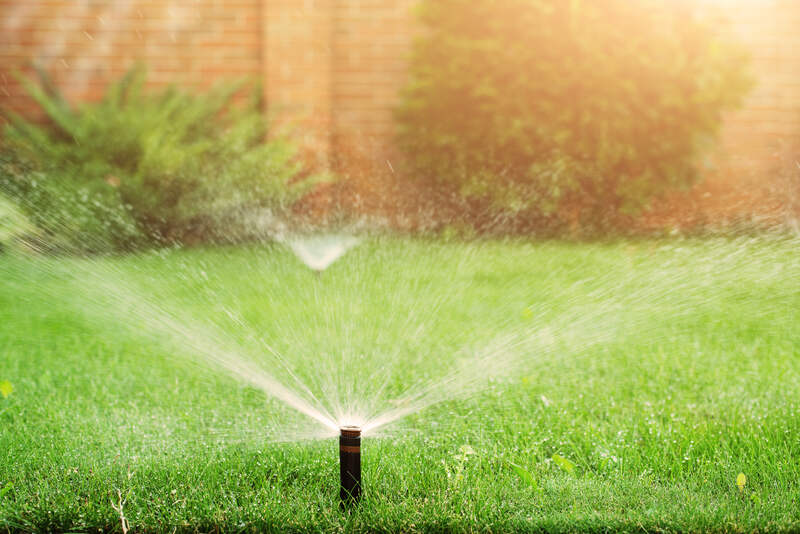
Homeowners have two options for their cool-season lawns during summer: Either water the turfgrass to maintain a green lawn that’s actively growing or allow it to go dormant and turn brown.
Option 1: Water Deeply but Infrequently for a Green Summer Lawn
During this time of the year, turfgrass requires around 1 to 1.5 inches of water a week. Either apply this amount of water in one go per week or twice a week in separate sessions. If you choose to do the latter, space them out three to four days apart.
- Avoid frequent, light applications of water since it will promote lush growth and shallow rooting, which makes the lawn less drought tolerant. Shallow-rooted grasses are more likely to develop pest problems as well.
- Sprinklers are your best bet. To determine how much water is getting to your lawn, do a sprinkler audit. Place two or three rain gauges (or tuna cans) within the spray pattern to help you determine the amount of water your system is putting onto the lawn.
- Water early in the morning, from 5 a.m. to 9 a.m., to allow the water to soak into the soil without losing it to evaporation. Avoid watering during the evening as this increases the risk of disease.
- Irrigate when grass shows signs of moisture stress. When this happens, Kentucky bluegrass, for example, turns bluish-green and becomes less resilient. Other grasses will also lose their normal, healthy color.
Option 2: Allow Dormancy to Take Place
A state of “dormancy” is a defense mechanism that cool-season grasses have developed to survive during higher temperatures. Do not misconstrue not watering grass during summer as neglect, as turfgrass roots and crowns can remain alive even if the foliage is dead.
Healthy cool-season lawns can survive four to six weeks without irrigation or rainfall once dormancy kicks in. Buffalograss, on the other hand, is a warm-season grass and is more tolerant of drought when compared to cool-season grasses. It requires very little or no supplemental water to stay green during an Iowa summer.
Note: Kentucky bluegrass (KGB) lawns are at risk of dying if dormant for more than four to six weeks. To prevent serious damage, give 1 to 1.5 inches of water (single application) to KGB lawns that have been dormant for this length of time. Repeat this process after a week. Once the dormant turf receives this second application of water, it should green up again.
5. Insecticides vs. White Grubs
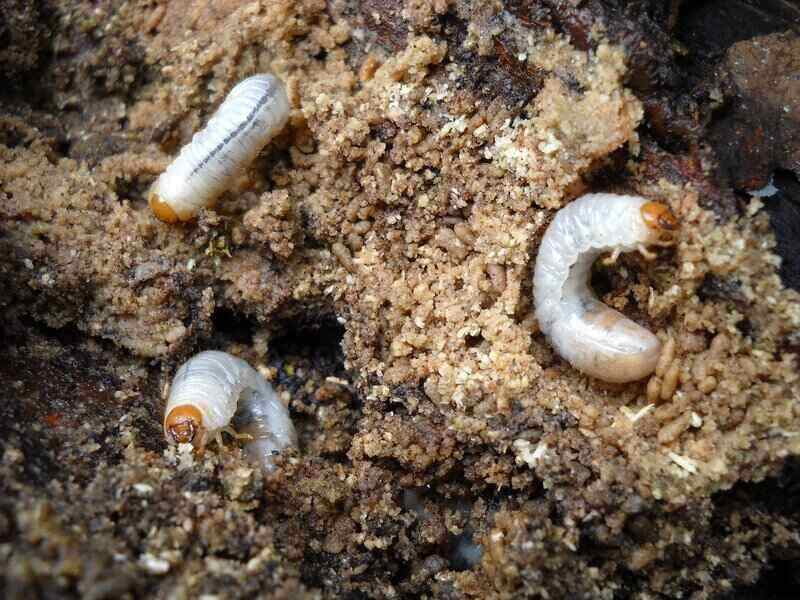
When it comes to lawn pests in Iowa, white grubs are one of the most destructive. They usually appear starting in mid-August; however, damage might not become apparent until September or October. Thankfully, there are insecticides to help contain these summertime root feeders.
How to Identify Grub Damage in the Lawn
- Racoons, crows, and skunks may sniff out high concentrations of grubs and leave behind a big mess in your lawn from their digging.
- Gray-green discoloration on the lawn
- Wilting in the hot sun (early in the season)
- Severe grub damage “causes the turf to die in large, irregular patches that can be rolled back like a loose carpet” according to Iowa State.
How to Get Rid of Grubs
Here are three approaches you can take to manage white grubs:
- Apply preventive insecticide once a year on your lawn. The best time to apply preventive insecticide is around June to early August.
- Apply curative insecticide should symptoms of grub infestation appear in your lawn.
- Do not apply insecticide and instead repair damaged lawn areas.
Home gardeners may consider using imidacloprid (Merit®), chlorantraniliprole (Grub-Ex®), and halofenozide (Mach 2®). Be sure to follow directions when using insecticides.
You can also get rid of grubs naturally:
- Reduce insecticide use: Using insecticides less helps naturally occurring pathogens (bacteria, protozoa, fungi) survive and weaken or kill white grubs.
- Let ants and ground beetles eat young grubs and eggs. On the other hand, different kinds of flies and wasps serve as parasites to more mature grubs.
- Use insect parasitic nematodes curatively in small affected areas. Expect 60% to 100% control when used correctly.
- Pierce them with spiked aeration shoes as an alternative approach.
6. Fertilizing During the Summer
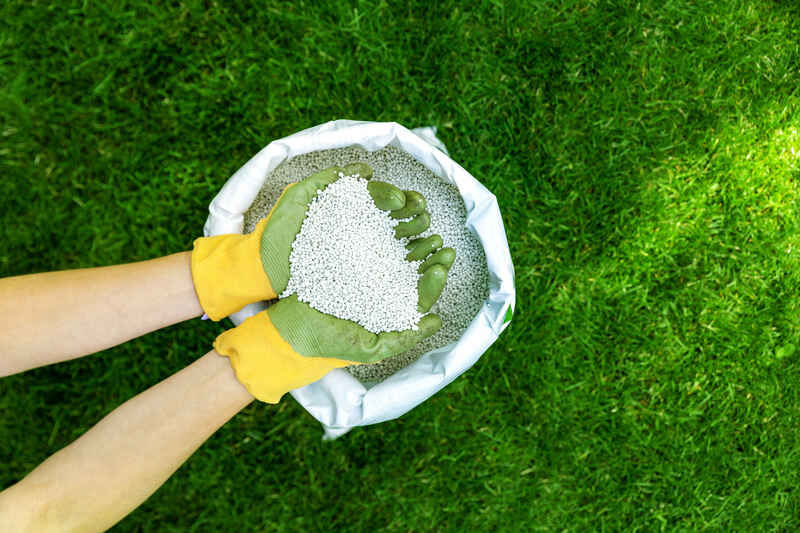
Both cool- and warm-season grasses can be seeded in Iowa, but each should be fertilized at a different time during the warm months.
Fertilize Cool-Season Turf in Late Summer
It’s not advisable to fertilize cool-season grasses during the summer heat of June to August. Wait until late summer through fall before doing so. Instead, consider mulching grass clippings as a natural alternative to fertilizers during this time of year. You can also fertilize in spring.
Fertilize Warm-Season Turf in Early Summer
It’s best to fertilize warm-season grasses like buffalograss when they’re actively growing in the summer months of June to July. Slow-release or organic-based fertilizers are best to use for grass types like this. This avoids a rapid surge of growth while providing a controlled fertilizer release throughout the season.
7. Hold off on the Herbicides
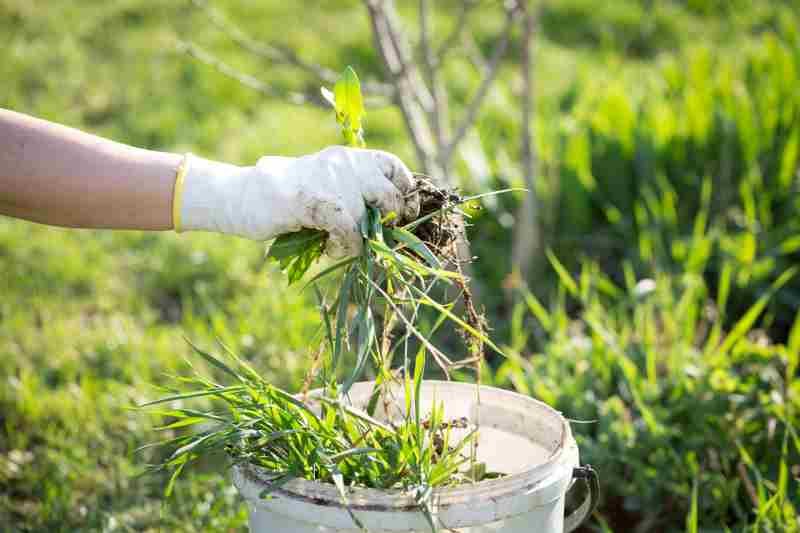
Applying herbicides during summer is generally not recommended. If you must spray herbicides during the summer months in Des Moines, use them only if temperatures are under 85 F. High temperatures may reduce the efficacy of the product and/or injure your turf.
Consider removing weeds like goosegrass and crabgrass by hand instead. It’s best to remove them before the seed heads form. This prevents a new generation of seeds from being deposited into the soil. If you prefer to use a chemical control, annual weeds like crabgrass are best dealt with using a pre-emergent herbicide during spring.
Broadleaf perennials are best kept at bay with a post-emergent herbicide during late summer or early fall. Common broadleaf perennials include:
- White clover
- Dandelion
- Broadleaf plantain
8. Aerate During Fall Instead
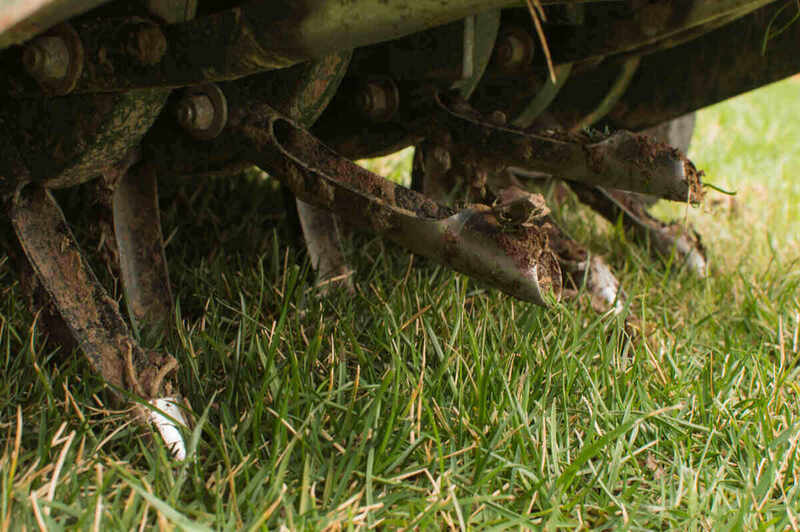
Lawn aeration, or the process of putting holes in your turf, creates pathways to allow air, nutrients, and water to penetrate thatch and compaction to reach the roots of your grass. Summer aeration, however, puts a lot of stress on already struggling grass due to excessive heat. It’s better to wait this out until late summer or fall (spring is also acceptable).
Can’t Wait? Aerate in Early September
If you want to get a head-start on your cool-season lawn chores, aeration during early September can be a good alternative if you want it done ASAP, before summer ends. You can either DIY this by renting a core aerator from a hardware store or contact a professional.
Water the lawn one or two days prior to help soften the soil a bit. Aim for around 20 to 40 holes per square foot. For best results, soil cores should be around 3 inches long and 3/4 inch in diameter. Let the cores dry out for a few days; then rake to break them up or let them biodegrade on their own.
9. Observe Iowa Water Restrictions
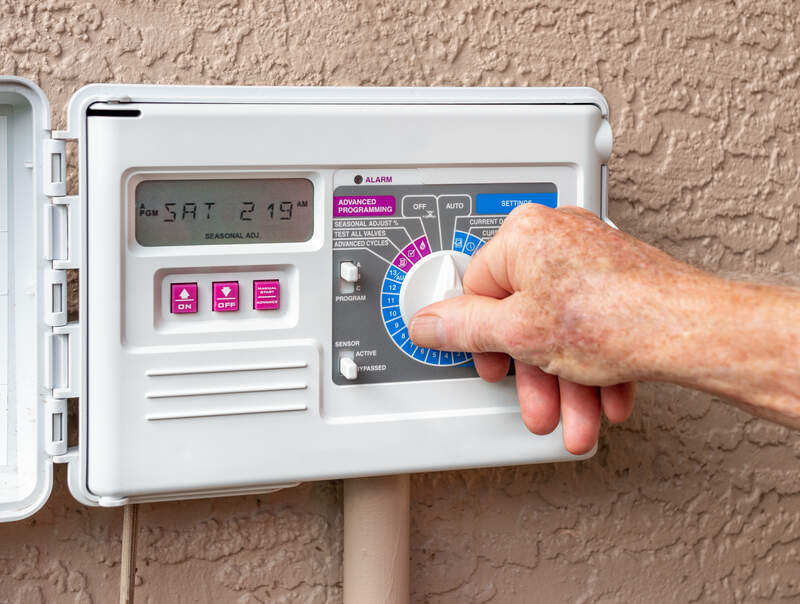
The Des Moines Water Works encourages homeowners to “Use Water Wisely” during the summer in Central Iowa.
Here are a few ways to reduce your water bill and keep your Iowa lawn in top form this summer:
- Consider hiring a pro to activate your sprinkler system in the spring. They’ll check for leaks and damage, adjust sprinkler heads, program your smart controller, and test each zone.
- Perform a lawn sprinkler audit. Similar to your favorite banking app, a lawn sprinkler audit gives you “spending insights” on how much water you are putting onto the lawn. Is it too little; is it too much? Just like your trips through the drive-thru, a little bit of extra water can add up quickly. Audit your sprinkler to use only what the lawn needs.
- Get smart with your watering. Smart irrigation controllers use local weather information to avoid overwatering, say, the day after a good rain. If you’re a set-it-and-forget-it type, this may be a worthwhile investment. Some water providers even offer rebates.
- Water early in the morning, between 4 a.m. and 8 a.m. This is the best time to water your grass. Watering early prevents excessive evaporation and allows the grass to dry out quickly to help prevent fungus on the lawn.
FAQs
Yes! Leaving them on your lawn to decompose is not laziness but is actually good since they turn into a natural fertilizer. This process is called “mulching” and returns much-needed nutrients like nitrogen, phosphorus, and potassium back into your lawn.
While grass clippings are healthy for your lawn, you should bag or rake them when:
• You’re mowing extremely tall grass
• You notice any sort of plant disease or fungus developing
Avoid mulching when this happens since it could spread it all over your yard.
You won’t do any harm to dormant turfgrass if you fertilize in late summer. However, the lawn might not get the full benefit of a fertilizer application in this dormant state. It’s best to wait until late summer or fall from mid-September to late October.
Consider Calling a Professional
It takes time, effort, and sweat equity for homeowners to take care of a cool-season lawn during the summer. If you’re not willing to put in the work, Des Moines lawn care providers are ready to take these sweaty summer lawn care tasks off your to-do list.
Additional source:
Main Photo Credit: Salisbury House / Jmaxschwerd / Wikimedia Commons / CC BY-SA 3.0